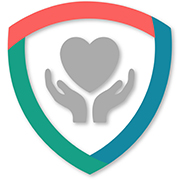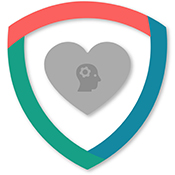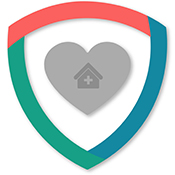 Say the title of this article out loud to yourself. Let that sink in for a moment. Can you picture yourself silently saying this to your aging parent who struggles to remember the past? Now picture yourself saying it with a smile in your heart. You are building new memories that you will have for a lifetime. Make them count using the power of photos.
Say the title of this article out loud to yourself. Let that sink in for a moment. Can you picture yourself silently saying this to your aging parent who struggles to remember the past? Now picture yourself saying it with a smile in your heart. You are building new memories that you will have for a lifetime. Make them count using the power of photos.
This is something I tried to remind myself of often when spending time with my dad during the final stages of his Alzheimer’s and I find myself doing the same as I enjoy time today with my mom. That cruel disease of Dementia, stealing the memories of our loved ones, can be discouraging. But if you try to remember that you are building new memories, while leaning on the old memories, you will one day look back and be glad you thought of it this way. I know I am.
Using the Power of Photos to Build New Memories
One possible way to create new fun memories with your loved one who suffers from memory loss is to use photos to stimulate conversations about the past. Photographs from the past allow patients to reminisce about pleasant times in their lives. Photographs from the present help patients relate to their current situation. The patient experiencing memory loss is able to “remember or recognize someone they love and know in a world where so many things are now unfamiliar to them.”2 A study by Ellen Mahoney of Boston College found that, in one instance, photos distracted the Alzheimer’s patient from the effects of Alzheimer’s disease.
Using the “Moments” platform of the Genus™ App, you and all the other members of your caring community can use a consistent set of photos to work with your aging loved one. From the app, you can upload the photos you take to a digital photo frame for your loved one to enjoy. My mother comments almost daily on how much she loves the photos we send to her via our phones to her photo frame. It makes her feel part of her children’s and grandchildren’s lives to see the photos they send from their various adventures. Of course she adores the photos we take when we’re with her as well, but she really benefits from seeing “surprise” photos pop up on her frame from her loved ones’ comings and goings.
10 Photo Tips for Families Facing Alzheimer’s
Compiled by the Alzheimer’s Association® in partnership with Shutterfly, here are 10 ways you can help lift a person with dementia to reminisce:
- Place photos in chronological order.Photo books can be great tools for showing someone’s life history or story. Start your photo book at the beginning of the person’s life and lead up to the present day. Organize the book around key moments and concentrate on happy occasions to assist with engagement. Also, keep the design simple, with one or two pictures per page, so the photos are easy to focus on.
- Show relationships. To help spark recognition of family members, dedicate a section to each person. Choose photos that include the person with the family member from different life stages and place them in chronological order.
- Select meaningful moments. Be sure to include photos that reflect the person’s meaningful life moments and depict his/her favorite hobbies or activities, such as weddings, graduations and vacations.
- Make it an activity.Work with the individual as appropriate to create the book, and share memories and conversation as you put it together.
- Engage in conversation.Ask open-ended questions about the people or events in the photo. How were you feeling in that picture? Tell me about your brother. What are some of your favorite childhood stories? Tell me more about this picture. The answers are less important than the conversation and engagement.
- Share your own memories.As part of the conversation, share your memories and feelings when looking at the pictures. Answer some of the same questions you’re asking the person with Alzheimer’s.
- Connect, don’t correct.This is more about making a connection and sharing memories. Focus on connecting with the person, not correcting them.
- Revisit frequently. Take the time to frequently revisit memories using the photos. Do what works best for the individual. It may be daily or weekly, depending on the person.
- Mix it up.Don’t discuss the same set of photos week after week. To help keep it fresh and interesting, discuss various parts of the book with different people and events on a regular basis.
- Move at a comfortable pace.Follow cues from the individual to gage their interest level and determine how they are reacting to the photos.
It’s important to monitor your loved one’s reactions to the activity. If the reaction is joyful or reminiscent, you are on the right track. There may be times that the photos may somehow agitate him/her, then obviously you will want to redirect. Like anything we do when dealing with dementia, what works one day, may not necessarily work the next. One of our many challenges that keeps us on our toes!
 It’s late at night, you feel like you need some support, you don’t feel like calling the 24/7 Alzheimer’s hotline, but you need some sort of boost in the arm as you try to figure out the best way to care for your loved one with memory issues.
It’s late at night, you feel like you need some support, you don’t feel like calling the 24/7 Alzheimer’s hotline, but you need some sort of boost in the arm as you try to figure out the best way to care for your loved one with memory issues. 
 One of the most frustrating things to deal with when caring for an aging parent is the many health complications that arise as one ages. Medical safety is of key concern. Many family member also acting as caregivers have not had a great deal of experience dealing with doctors and various medical safety issues. There are many questions that arise, making the whole caring experience a bit overwhelming without the proper information.
One of the most frustrating things to deal with when caring for an aging parent is the many health complications that arise as one ages. Medical safety is of key concern. Many family member also acting as caregivers have not had a great deal of experience dealing with doctors and various medical safety issues. There are many questions that arise, making the whole caring experience a bit overwhelming without the proper information.